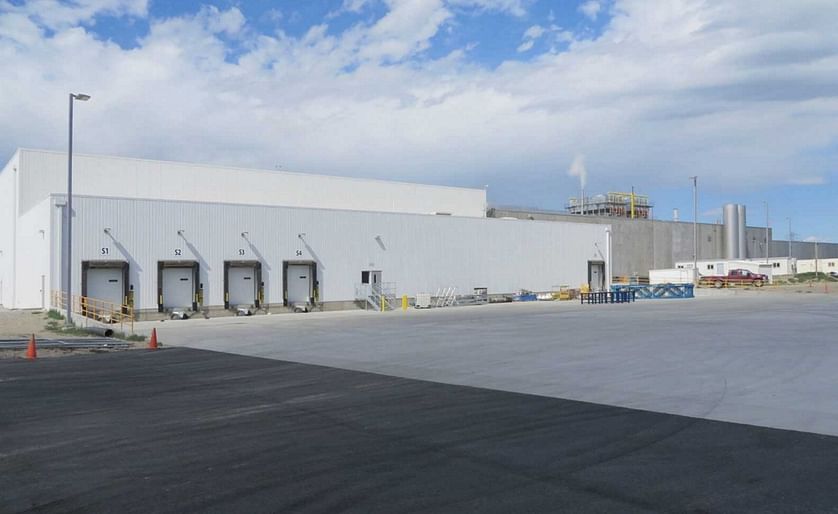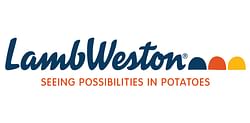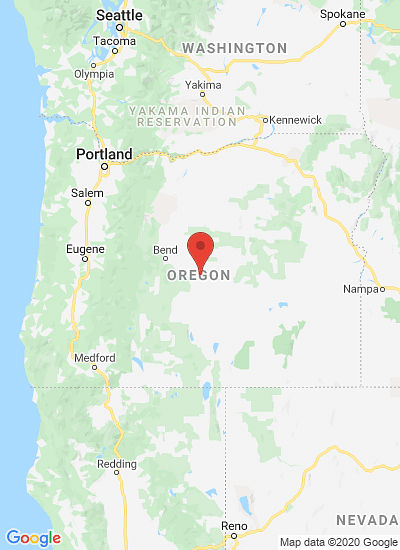Conagra Foods Lamb Weston Boardman facility has received its official Leadership in Energy and Environmental Design (LEED®) Silver certification. The expansion can be seen in the foreground (Courtesy: Fisher Construction Group, Inc)
Lamb Weston Boardman OR facility receives (LEED®) Silver Certification

ConAgra Foods Lamb Weston's Boardman, Oregon, processing facility has received its official Leadership in Energy and Environmental Design (LEED®) Silver certification, awarded by the U. S. Green Building Council (USGBC).
The design, construction and operations at the 505,000 square foot processing facility – known as Boardman East – were developed with environmental impact and sustainability in mind. The plant makes french fries and other frozen potato products from potatoes harvested primarily in the Columbia Basin. This certification is the result of work done to complete a 340,000 square foot addition to an existing building. The addition began operations in June, 2014. The Silver certification applies to both the existing structure and the addition.
Rick Martin, vice president, Global Operations at Lamb Weston:
"We approached the addition in Boardman the way we approach all of our projects – with an eye for efficient and sustainable operations."
"We learned a lot from our experience with our LEED Platinum facility in Delhi, and we brought the best of what we learned to the design and construction of the addition in Boardman."
Lamb Weston’s sweet potato facility in Delhi, Louisiana, was the first frozen food manufacturing facility worldwide to receive LEED Platinum certification when it opened in 2011.
The Boardman East plant is a state-of-the-art facility that represents Lamb Weston’s commitment to resource-efficient food processing, waste reduction, environmentally responsible construction methods, and providing a healthy, safe, and productive working environment. The company recently announced plans to further expand the facility with an additional line for making chopped and formed items like hash brown patties and potato puffs.
To earn LEED Silver certification, a building is evaluated by the USGBC on a number of specific criteria: sustainable sites (protecting the environment), water efficiency, energy and atmosphere, materials and resources, indoor environmental quality, and the innovation and design process.
Notable features of the Lamb Weston LEED Silver facility include:
- Heat from par-fry equipment is captured and reused throughout the process, which decreases the facility’s use of natural gas by approximately 20%. The heat energy saved annually through the capture and reuse of exhausted heat is the equivalent of the energy used to power more than 5,000 homes.
- Landscaping featuring more than half native species requires no permanent irrigation.
- Ninety percent of the construction waste from the project was recycled or reused on site, diverting more than 4,150 tons of waste from the landfill.
- High-efficiency LED lighting throughout the office area saves more than 35% in lighting energy compared to a code-compliant building.
- The heaviest materials for the project – concrete, asphalt, rebar and wood – were sourced from within 500 miles of the project and supplies containing recycled material make up 35% of the total project materials.
Project partners included Fisher Construction Group, Inc., a leading design and construction firm with expertise in the food industry based in Burlington, Washington, and Paladino and Company, a Seattle, Washington-based sustainability and green building consulting firm at the forefront of the green building movement.
Dev DuRuz, Sr. Consultant and project Commissioning Agent, Paladino and Company:
“Paladino is proud to have provided LEED management services throughout design and construction of the facility.”
“We worked with the team to determine and implement requirements for achieving LEED Silver certification using specialized credit tracking tools and expertise."
"The project was challenging because no precedents existed in the industrial world at the time and multiple parties had to be tied together for a comprehensive understanding and alignment of the facility’s energy saving needs."
"This certification is the result of our combined efforts.”




